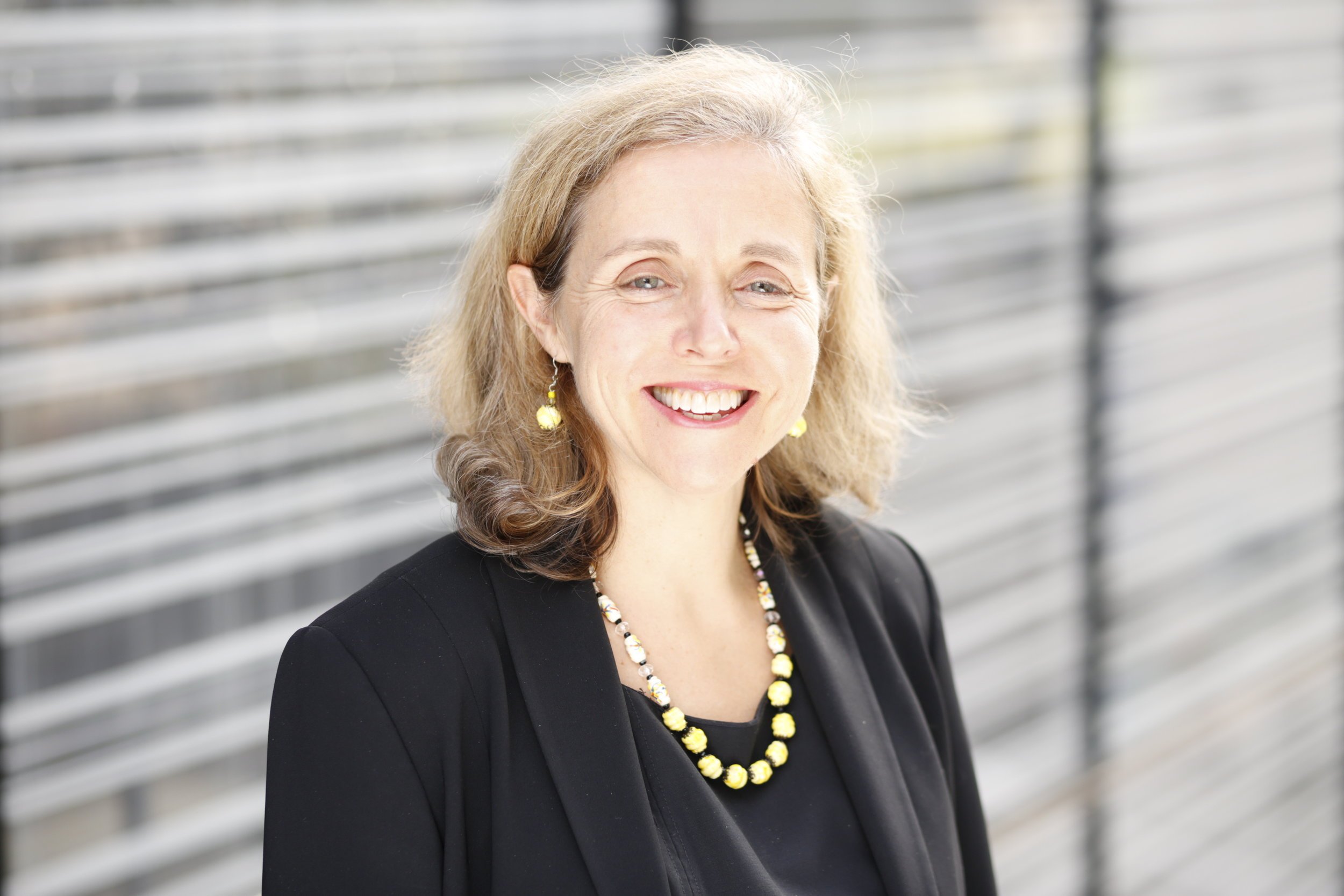Seven years and counting: the NSSN continues to deliver on its vision
In this thought piece, Jo White, Chair of the NSW Smart Sensing Network, writes about the journey of the NSSN from its foundation to the present day and its continued vision to utilise smart sensing to address some of Australia’s greatest challenges.
The foundation of the NSSN in 2016. The original Co-Directors Professor Benjamin Eggleton, Professor Justin Gooding, alongside NSW’s inaugural Chief Scientist and Engineer Mary O’Kane and former NSSN Chair Dr Susan Pond AM.
I joined the Board of the NSW Smart Sensing Network (NSSN) in 2018 and was appointed Chair in 2022. Recently I have been reflecting on how visionary the idea of the NSSN was, and how relevant smart sensing remains as we look to the future opportunities of technology for Australia.
The NSSN began as an idea by Professor Benjamin Eggleton from the University of Sydney, Professor Justin Gooding from the University of NSW and Professor Mary O’Kane, then the NSW Chief Scientist and Engineer. Mary connected Benjamin and Justin to capitalise on their considerable R&D capabilities to translate innovative physics and chemical sensing research to solve a range of real-world problems.
Through innovation and leadership, this idea led to the NSSN being founded in 2016 with the support of the NSW Government. At the launch, Professor O’Kane said, “By capitalising on the very strong problem-solving abilities of our universities and research organisations we will realise big improvements in our way of life – and that inevitably includes reaping economic wins”.
Fast forward to 2023 and the NSSN has grown substantially and demonstrated success through expanded R&D capabilities across nine member universities in NSW and ACT, and is bringing together universities, industry, and government to solve problems through research translation and commercialisation. It has continued to have progressive leadership and strong support from the NSW Government through the current NSW Chief Scientist and Engineer, Professor Hugh Durrant-Whyte.
The NSSN strives to be a global leader in smart sensing technology and creating value for the economy, environment, and society of NSW and beyond. It aligns with the NSW 20-Year R&D Roadmap, released in May 2022 by the Office of the NSW Chief Scientist and Engineer. Quoting Dr Susan Pond AM, the inaugural chair of the NSSN Board, “Smart sensing is the key to a multitude of advanced applications that can make our lives better and underpin billions of dollars of economic activity in Australia and trillions worldwide.”
I have recently moved from NSW to a Federal Government role, and I’m now working to inspire curiosity in science and technology and developing the future talent pipeline of young Australians into STEM. From what I can see, smart sensing and the work of the NSSN is aligned to the Australian Government’s Critical Technologies Statement, National Quantum Strategy, and the National Reconstruction Fund. To find out more, visit the Australian Government Department of Industry, Science and Resources website https://www.industry.gov.au
Released in May 2023, the Critical Technologies Statement sets out a number of commitments about the important role of critical technologies, and the activities underway to ensure we can capture the opportunities to support Australia’s economic prosperity, national security, environmental sustainability, and social cohesion.
The National Reconstruction Fund (NRF) is an Australian Government commitment of $15b which will provide targeted co-investments in independently assessed projects across seven priority areas:
renewables and low-emission technology
medical science
transport
value-add in agriculture
forestry, and fisheries sectors
value-add in resources
defence capability and enabling capabilities
$1b of the NRF has been allocated to support critical technologies and there are opportunities for smart sensing across all the priority areas.
The NRF will provide finance for projects that diversify and transform Australia’s industry and economy. It will help Australian industry move up the value chain, become more productive, and take advantage of opportunities in a net zero economy. This aligns well with the NSSN striving to be a global leader in smart sensing and to create value for the economy, environment, and society of NSW and beyond.
The Australian Universities Accord Interim Report released in July 2023 also refers to the importance of research broker bodies in sharing and translating university research. These bodies are delivering great results by identifying challenges, pulling together the right researchers, project managing, and managing funding to achieve targeted research outputs. The report says broker bodies could be used more widely to bolster the use of university research further. The NSSN operates as such one of these research broker bodies, pulling together the right researchers and achieving targeted research outcomes.
Jo White is a science leader and the current Director of Questacon - the National Science & Technology Centre. For the last 10 years, she has worked at a senior executive level leading science. She has extensive Government experience, with more than 25 years’ of operating at a senior level in the areas of science, strategy, and conservation and environmental management.
Jo joined the NSW Smart Sensing Network Board in 2018, and was appointed Chair in 2022. She holds a Bachelor of Applied Science majoring in Biology, a Post Graduate Diploma of Business and is a Graduate of the Australian Institute of Company Directors.


